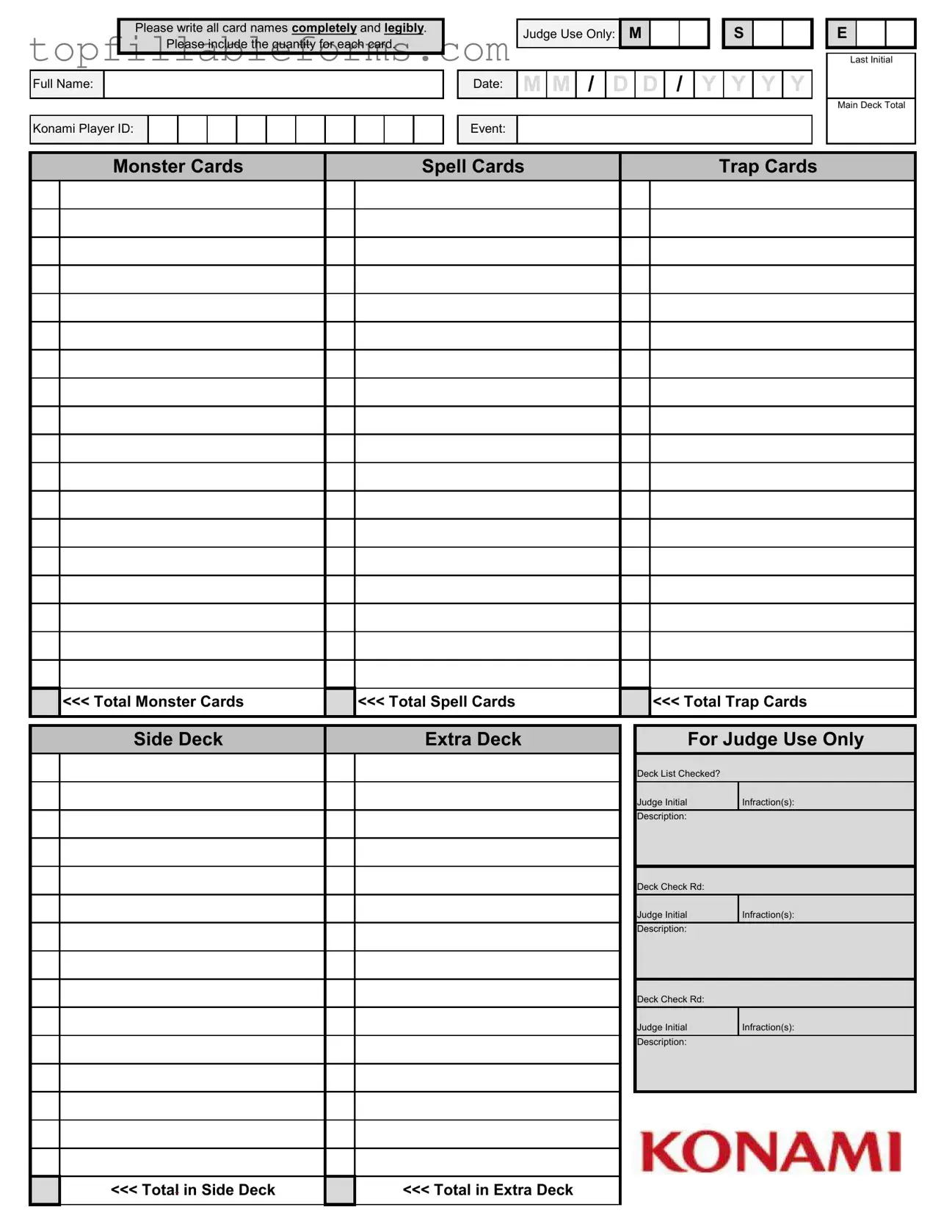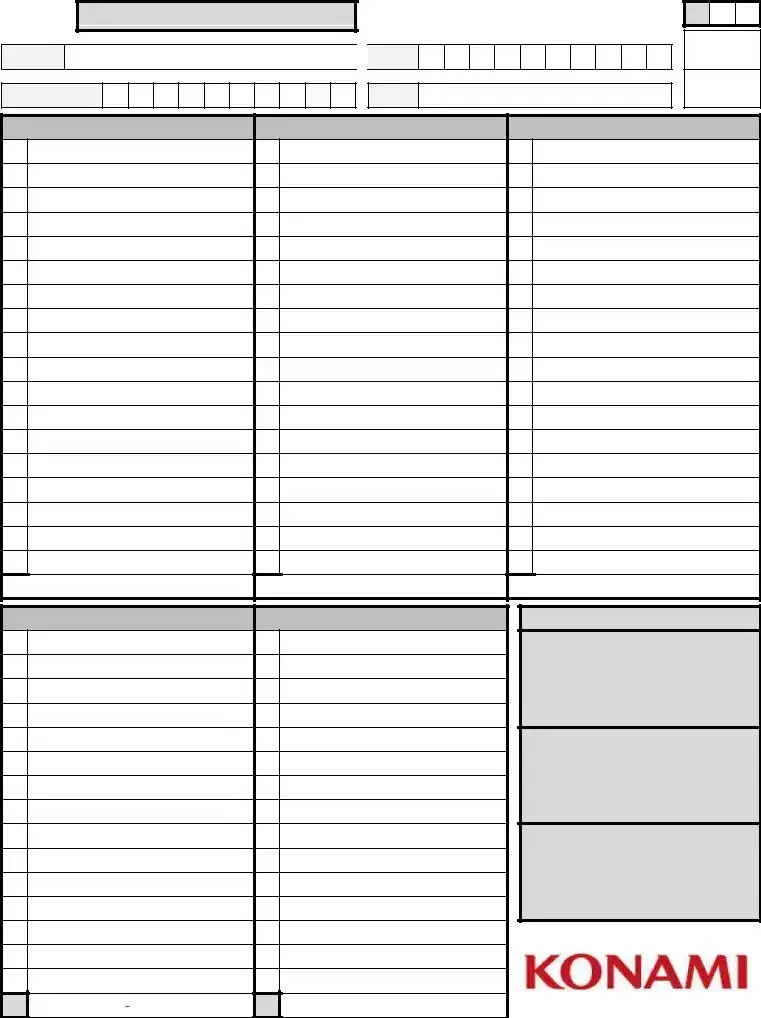Printable Konami Decklist Form in PDF
The Konami Decklist form is a critical document used in competitive card gaming to ensure that players accurately report their decks. It requires players to list all card names clearly and include the quantity for each card, alongside their personal details and event information. This form helps maintain fair play and allows judges to verify compliance with tournament rules.
Open Konami Decklist Editor Here




 <<< Total Monster Cards
<<< Total Monster Cards <<< Total Spell Cards
<<< Total Spell Cards <<< Total Trap Cards
<<< Total Trap Cards